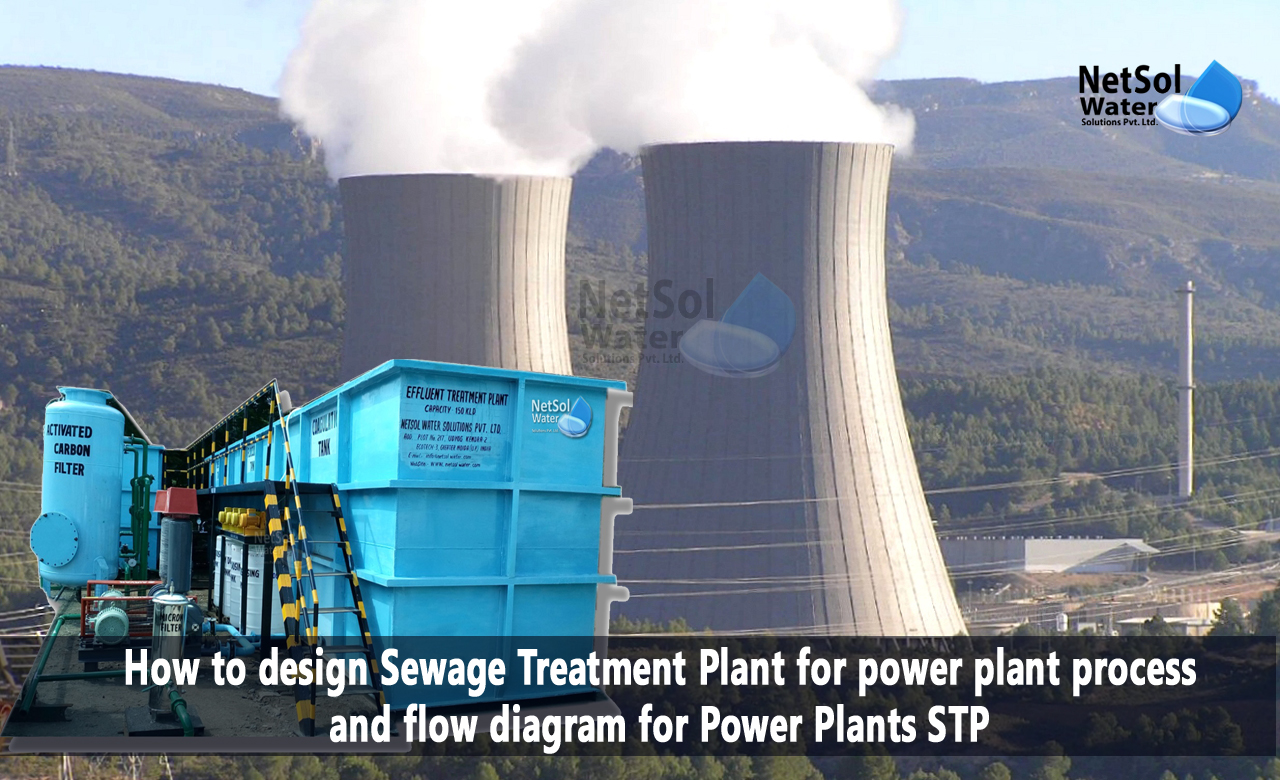How to design Sewage Treatment Plant for power plant?
Power plants generate a significant amount of wastewater that requires treatment before discharge into the environment. Proper treatment of power plant wastewater is critical to protect water quality and comply with environmental regulations.
Now here we will discuss the design of a sewage treatment plant (STP) for power plants and provide a working process.
Steps in Designing of STP for Power Plants.
The design of an STP for power plants requires consideration of several factors, including the quantity and quality of wastewater, regulatory requirements, available space, and budget.
Below are the general steps involved in designing an STP for power plants:
1. Characterization of Wastewater: The first step in the design of an STP is the characterization of wastewater generated by the power plant. This includes the determination of wastewater flow rates, chemical composition, and pollutants of concern. The characterization data is used to determine the treatment requirements and the type and size of treatment units.
2. Selection of Treatment Units: Based on the wastewater characterization, the next step is to select the appropriate treatment units to remove pollutants from the wastewater. Power plant STPs typically include a combination of physical, chemical, and biological treatment units such as screens, grit chambers, equalization tanks, activated sludge units, clarifiers, and disinfection units.
3. Process Flow Diagram: The selection of treatment units is used to develop a process flow diagram (PFD) that illustrates the sequence of treatment units and the flow of wastewater through the treatment plant. The PFD is a critical design document that provides a clear understanding of the treatment process and is used to calculate the size and capacity of each treatment unit.
4. Calculation of Design Parameters: Once the treatment units are selected, for each treatment unit, the next step is to calculate the design parameters such as:
a. Detention time,
b. Hydraulic loading rate,
c. Organic loading rate.
These parameters are used to determine the size and capacity of each treatment unit.
5. Equipment Sizing: Based on the design parameters, to operate the treatment units the next step is to size the equipment such as:
a. Pumps,
b. Blowers, and
c. Aerators.
The equipment sizing is critical to ensure the efficient operation of the treatment plant.
Process Flow Diagram for Power Plants Sewage Treatment Plant.
The process flow diagram (PFD) for power plant STP is shown below in Figure1:
These processes are explained further below:
· Bar Screen: The bar screen is the first unit that removes large debris and solids from the wastewater.
· Grit Chamber: The grit chamber removes grit, sand, and other heavy solids from the wastewater.
· Equalization Tank: The equalization tank provides uniform flow and load to the activated sludge unit.
· Activated Sludge Unit: The activated sludge unit is the heart of the treatment plant and removes organic matter and nutrients from the wastewater.
· Clarifier: The clarifier separates the treated wastewater from the activated sludge.
· Disinfection Unit: The disinfection unit disinfects the treated wastewater before discharge into the environment.
Summary.
The design of an STP for power plants requires careful consideration of several factors, including wastewater characterization, treatment unit selection, process flow diagram development, design parameter calculation, and equipment sizing. By following these steps and considering the specific requirements of the power plant, an STP can be designed that efficiently and effectively treats power plant wastewater.
The process flow diagram provided in this blog illustrates the typical treatment units used in a power plant STP and can be used as a reference in the design of such STPs.
Leading manufacturer of sewage treatment plants in India.
Netsol Water is the leading manufacturer, supplier, and exporter of a quality selection of water treatment, and wastewater treatment products in India, by using advanced sewage treatment methods.
RO plants, water softeners, ETPs, STPs, DM plants, AMC, O&M, Ultra filtration, UV, Ozonation, ZLD plants, Anoxic tanks, and other goods and services are available from us. We also provide services to businesses in sectors including automotive, pharmaceutical, textile, pulp & paper, beverages, refineries, schools, hospitals, office buildings, and hotels, among others.
Call us at +91 9650608473 or email at enquiry@netsolwater.com for further information.



